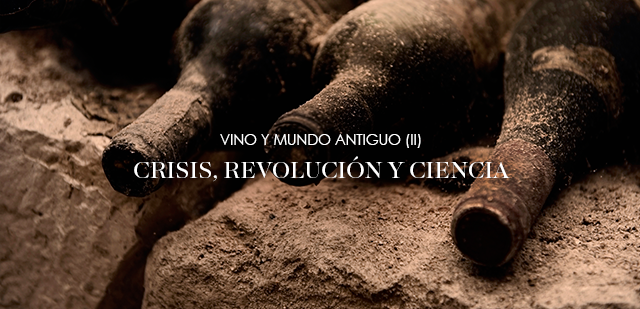WINE AND THE ANCIENT WORLD (II)

This won't be an epic account, but rather a quick look at several historical events that definitively shaped the future of wine culture. We'll severely compress time to go back to the Middle Ages and then trace wine’s convoluted path to the 19th century—the era of the most significant scientific advances in the field of modern viticulture and enology.
Dark times for wine
The advent of the Middle Ages in Europe also saw two events that would impact wine culture and seriously endanger humanity's achievements since pre-historic times: the identification, domestication and vinification of the grapevine and its fruit.
- First off, the southbound migrations of northern tribes known as the “Barbarians.” Various clans and tribes whose idea of social and cultural relations was very different. They were partial to beer and had no interest in winegrowing.
- Then there was the spread of Islamic territories, where the drinking of fermented fruit was restricted. Starting in the 8th century, it almost completely wiped out wine culture in Lebanon, Syria, Palestine, Egypt, Iran, northern Africa, Sicily and the Iberian Peninsula.
Although these events drastically decreased wine consumption, they also coincided with medieval Christianity, which was a combative, knowledgeable and strong advocate of wine culture.
Monastic orders as catalysts for the wine world
The close relationship between the church and wine as a form of liturgical expression also brought about the first viticultural treatises, new wine-related legislation, and a new boom in viticultural knowledge.
The Visigothic Codex Euricianus, which dates from the 5th century, ruled in favor of winegrowing. One of its articles called for the planting of two vines to replace each uprooted one.
As a result, Benedictines and Cistercians from Bordeaux to Mosel to Santes Creus shared their findings with regard to varieties and winegrowing and vinification techniques, thus generating significant advances.
Lasting revolutions and innovations
The introduction of the glass bottle in the 17th century, followed by the invention of the cork stopper indisputably revolutionized the logistics of the wine trade. At the same time, the revolts that put an end to the old regime brought about a restructuring in how land was owned and farmed.
- The English company Tickets & Co. Glassworks was the first to patent an invention that mechanically produced bottles as we know them today, in either clear or green glass.
- Shortly thereafter, a second revolution took place, mainly in Catalonia, Extremadura and Portugal: the invention of the cork stopper made from the bark of the cork oak.
- The turbulent 17th and 18th centuries not only put an end to the old regime, they also changed society's idea of wine and its trade. In the aftermath of the French Revolution, the vineyards owned by the nobility and monasteries were redistributed among the people. In Spain, the disentailment under Mendizábal brought about the same results a little later on.
And science changed everything
- The innovations of the 19th and 20th centuries in the science of enology made it possible to modernize the winemaking and quality control processes.
- At the turn of the century, the value of grapes was already being determined by their quality, provenance and climate. The delimitation of winegrowing territories (the modern-day appellations of origin) provided the necessary information to identify truly great wines.
The rise of winemaking as an academic field during the 20th century (enology, ampelography, soil science, geology, etc.) and the most recent body of research have brought about significant scientific advances. Today's wines are top-quality products that not only respect, but revitalize the environment while building a social fabric based on knowledge and the transmission of values that find expression in the glass.
Bibliography:
The Story of Wine by Hugh Johnson. Published by Blume
The World of Wine, published by Larousse
Diccionario Salvat del Vino, MW. Published by Salvat.
